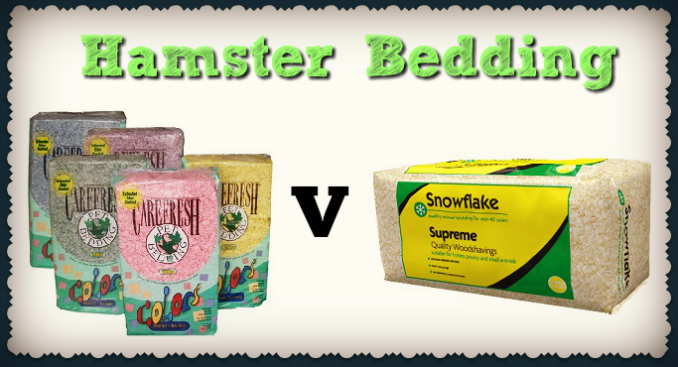
Dwarf Hamsters of all types like to burrow into the ground and build nests. The materials they use and the way they build nests depends on what part of the world they are naturally from and their natural environment.
We have collected a list of the best hamster bedding options available on the web and constructed a table for your convenience below.
| Bedding | Features |
|---|---|
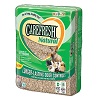 | Carefresh Confetti - Natural bedding. The healthiest and safest bedding for your hamster. Free of inks, dyes, clay and chemicals. Super Absorbent. Check Price on Amazon |
 | Kaytee Clean & Cozy - Made of safe materials that meet FDA standards. 99% Dust Free. Odor Control. Safe and Cozy for Small Pets. Check Price on Amazon |
 | Carefresh Confetti - Super Absorbent. Multi Colored Bedding. 3x More absorbent than shavings. 99% Dust free. Check Price on Amazon |
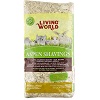 | Aspen Shavings - Ideal bedding material for small pets such as hamsters. Made from 100-percent natural aspen wood. Check Price on Amazon |
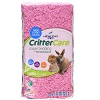 | Healthy Pet Bedding - Absorbs 3x its weight. Proprietary odor control formula that neutralizes pet odors. Check Price on Amazon |
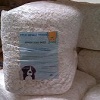 | Fitch Paper Bedding - Ultimate Value for Money for the UK.  Check Price on Amazon |
Contents
Introduction to Hamster Bedding & Substrate
Hamster bedding (Also called substrate), is the material that you use to line the bottom of your hamster home. Its primary purposes are:
- Soak up Urine.
- Inhibit Bad Odors.
- Provide a natural environment for hamsters to dig and burrow.
- Gives hamsters a soft and safe environment in which to walk around.
- Makes a hamster cage more aesthetically pleasing for humans
There are many different types of hamster bedding each with their advantages and disadvantages. There are differences of opinion in the online community about the suitability and safety of some of them. The base of the hamster cage should be lined with about 3 cm of hamster bedding to allow for adequate absorption and borrowing possibilities.
In addition to hamster substrate, you can also add a hamster potty with dedicated hamster litter; however, the usefulness of this depends on your hamster’s toilet training. The vast majority of Hamsters will choose a spot to urinate in and stick to it. Most of the time it will be furthest away from the nest area as possible. Below is a roundup of the most popular choices for hamster bedding. Including the disadvantages, advantages and cost.
Hamster Bedding Comparison Table
| Substrate | Pros | Cons |
|---|---|---|
| Wood Shavings | Cheap, widely available and reasonably absorbent | Not great at neutralizing bad odors |
| Sawdust | Very Absorbent | Major health issues |
| Wood Pulp Bedding | Very soft & Absorbent | Some brands expensive and difficult to source |
| Paper Based Cat Litter | Quite Absorbent, widely available, available at supermarkets | Hard on Hamster feet & not burrowing friendly |
| Wood Based Cat Litter | Quite Absorbent, widely available, available at supermarkets | Can be expensive and difficult to source |
| Hemp Bedding | Reasonably absorbent | Difficult to source |
| Recycled Paper | Fairly Absorbent | Can be expensive and difficult to source |
Wood Shavings
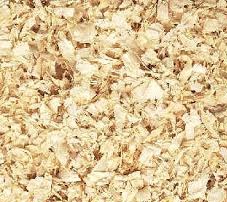
The most popular type of hamster bedding around the world. It is cheap, widely available, reasonably absorbent and available in large and small bags. Please avoid Pine and Cedar wood shavings because it has been reported to have caused respiratory problems in hamsters. Avoid scented shavings as they are more likely to contain harmful chemicals.
Some brands of wood shavings can contain excessive dust that is detrimental to hamsters and makes them sneeze. Sawdust can irritate the eyes and nose.
Ideally, you should buy pet-specific shavings for use in small animal cages. Aspen is the best type of wood for animal use.
Sawdust
Sawdust is a definite no-no for small animals. It causes respiratory problems and irritates their eyes and nose. If you love your pet, do not use sawdust.
Wood/Paper Based Cat Litter

Regular cat litter clumps together when wet and can expand making it very dangerous for hamsters because they may ingest some. Wood/Paper based cat litter is a viable option for hamster substrate on their case floor, however using this will mean you will need to use a dedicated nesting material for your hamster.
Wood/Paper-Based Cat Litter is an excellent option for a Hamster Toilet even if you are using another type of hamster bedding throughout the cage. Cat litter is good value for money, and a big bag will last you a very long time if using for hamster cages. This type of bedding does not allow hamsters to burrow and dig as much as others can.
Wood Pulp Bedding
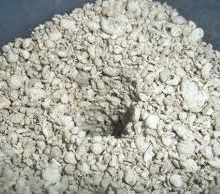
A very popular choice and comes in the form of a few different branding. The most popular are Carefresh Pet Bedding. It is a safe, healthy bedding option made from reclaimed pump waste.
It is free from inks, dyes, clay and chemicals used in the paper-making process. It is also processed to remove potentially harmful hydrocarbons that exist in pine and cedar oils. Carefresh Pet Bedding is tested for containment’s and sanitized to 380 Degrees to kill off bacteria, mold, and fungus.
Megazorb is similar to Carefresh and is a FANTASTIC value for people living in the UK. 85 liters for under £20 is excellent value for money, and the large bag will last for a long time.
